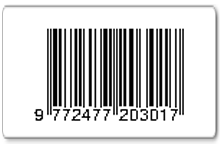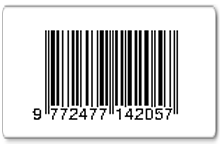The Use of Mobile Application as a Media in Physics Learning
Abstract
This article aimed to investigate the use of mobile application among physics teachers in terms of its use as a tool for physics experiment and the obstacles faced by teachers. The data were collected using a questionnaire consisted of 15 questions. The participants were physics teachers in SMP/MTs and SMA/MA (junior high schools and high schools) in West Java, Indonesia. The questionnaire was delivered through social media Whatsapp in a form of Google Form. The results showed that mobile application had not been widely used by the teachers as a tool for physics experiment. This condition occured because of their limited knowledge in using mobile application as a tool for physics experiment. It is expected that the use of mobile application training will be a solution in updating ICT skills of physics teachers.
Keywords
Full Text:
PDFReferences
Ahmed, S., Abdullah, Z. and Palit, R. 2015, ‘A Study of mobile application usage in Bangladesh’, SSRG International Journal of Computer Science and Engineering, vol. 2, no. 2, pp. 27–39
Amoroso, A. and Rinaudo, M. 2018, ‘Study of oscillatory motion using smartphones and tracker software Study of oscillatory motion using smartphones and tracker software’, Jornal of Physics: Conference Series, vol. 1076, pp. 1-5.
Anachack, P. and Darya, D. (2018) ‘Evolution of Mobile Applications’, MATEC Web of Conferences, vol. 155, pp. 1-7.
Arribas, E., Escobar, I. and Suarez, C. P 2015, ‘Measurement of the magnetic fi eld of small magnets with a smartphone : a very economical laboratory practice for introductory physics courses’, European Journal of Physics., vol. 36, no. 6.
Deidu, H 2013, Signs of US Android net user decline, viewed 20 May 2019, .
Fernandes, JC, Sebastião PJ, Gonçalves LN, and Ferraz, A 2017, ‘Study of large-angle anharmonic oscillations of a physical pendulum using an acceleration sensor’, European Journal of Physics, vol. 38, no.4.
Geladze, D 2015, ‘Using the internet and computer technologies in learning/teaching process’, Journal of Education and Practice, vol. 6, no. 2, pp. 67–9.
Goncalves, AMB, Cena, CR, and Bozano, DF 2017, ‘Driven damped harmonic oscillator resonance with an arduino’, Physics Education. vol. 52, no.4
González, MÁ and González, MÁ 2016, ‘Smartphones as experimental tools to measure acoustical and mechanical properties of vibrating rods’, European Journal of Physics. vol. 37, no. 4, pp. 1–13.
Hirth, M., Kuhn, J. and Muller, A 2015, ‘Measurement of sound velocity made easy using harmonic resonant frequencies with everyday mobile technology’, The Physics Teacher, vol. 53, no. 120
Hopson, M. H., Simms, R. L. and Knezek, G. A. 2001, ‘Using a technology-enriched environment to improve higher-order thinking skills’, Journal of Research on Technology in Education, vol. 34, no. 2, pp. 109–19
Islam, MR, Islam, MR and Mazumder, TA 2010, ‘Mobile Application and Its Global Impact’, International Journal of Engineering & Technology, vol. 10, no. 6, pp. 104-11.
Kaino, L. M., Mtetwa, D. and Kasanda, C 2014, ‘Experiences in the dissemination and utilisation of Information and Communication Technology (ICT) research findings from three southern African Universities’, Africa Education Review, vol. 11, no.2, pp. 37–41.
Kapucu, S 2017, ‘Finding the acceleration and speed of a light-emitting object on an inclined plane with a smartphone light sensor’, Physics Education, vol. 52, no. 5, pp. 1–7.
Kuhn, J. and Vogt, P 2013, ‘Applications and Examples of Experiments with Mobile Phones and Smartphones in Physics Lessons’, Frontiers in Sensors, vol. 1, no. 4, pp. 67–73.
Monteiro, M., Cabeza, C. and Marti, A. C 2014, ‘Exploring phase space using smartphone acceleration and rotation sensors simultaneously’, European Journal of Physics, vol. 35, pp. 1-9.
Okolocha, C. C. and Nwadiani, C. O 2015, ‘Assessment of Utilization of ICT Resources in Teaching among Tertiary Assessment of Utilization of ICT Resources in Teaching among Tertiary Institution Business Educators in South Nigeria’, Journal of Education and Learning, vol. 4, no.1, pp. 1–10
Ozer, E., Feng, D. and Feng, M. Q 2017, ‘Hybrid motion sensing and experimental modal analysis using collocated smartphone camera and accelerometers’, Measurement Science and Technology, vol. 28, no. 10.
Pelgrum, WJ 2001, ‘Obstacles to the integration of ICT in education: Results from a worldwide educational assessment’, Computers and Education, vol. 37, no. 2, pp. 163–178.
Pierratos, T. and Polatoglou, H. M 2018, ‘Study of the conservation of mechanical energy in the motion of a pendulum using a smartphone’, Physics Education, vol. 53, no. 1.
Pili, U. and Violanda, R 2018a, ‘A simple pendulum-based measurement of g with a smartphone light sensor’, Physics Education. vol. 53, no. 4.
Pili, U. and Violanda, R 2018b, ‘Measuring average angular velocity with a smartphone magnetic field sensor’, The Physics Teacher, vol. 56, no. 144.
Sarwar, M. and Soomo, T. R 2013, ‘Impact of Smartphone ’ s on Soci ety’, European Journal of Scientific Research, vol. 98, no. 2, pp. 216-26
Septianto, R. D., Suhendra, D. and Iskandar, F 2017, ‘Utilisation of the magnetic sensor in a smartphone for facile magnetostatics experiment: Magnetic field due to electrical current in straight and loop wires’, Physics Education, vol. 52, no.1.
Sung, Y., Chang, K. and Liu, T 2016, ‘The effects of integrating mobile devices with teaching and learning on students’ learning performance: A meta-analysis and research synthesis’, Computers & Education, vol. 94, pp. 252–75.
Wee, M. C. and Bakar, Z. A 2006, ‘Obstacles towards the use of ict tools in teaching and learning if information system in Malaysian Universities’, The Internationak Arab Journal of Information Technology, vol. 3, no.3, pp. 1–7.
Wisman, R. F., Spahn, G. and Forinash, K. 2018, ‘Time measurements with a mobile device using sound’, Physics Education. vol. 53, no.3
Woolsey, K. and Bellamy, R 1997, ‘Science Education and Technology: Opportunities to Enhance Student Learning’, Elementary School Journal, vol. 97, no. 4, pp. 385–99.
Yoshino, K 2017, ‘Making science more accessible : DIY smartphone conversion brings microscopy to the masses’, vol. 1, no. 1.
DOI: http://dx.doi.org/10.30870/jppi.v5i1.3732
Refbacks
- There are currently no refbacks.
Copyright (c) 2019 Jurnal Penelitian dan Pembelajaran IPA

This work is licensed under a Creative Commons Attribution 4.0 International License.
Jurnal Penelitian dan Pembelajaran IPA is licensed under a Creative Commons Attribution 4.0 International License
Copyright © 2025 Jurnal Penelitian dan Pembelajaran IPA. All rights reserved.






